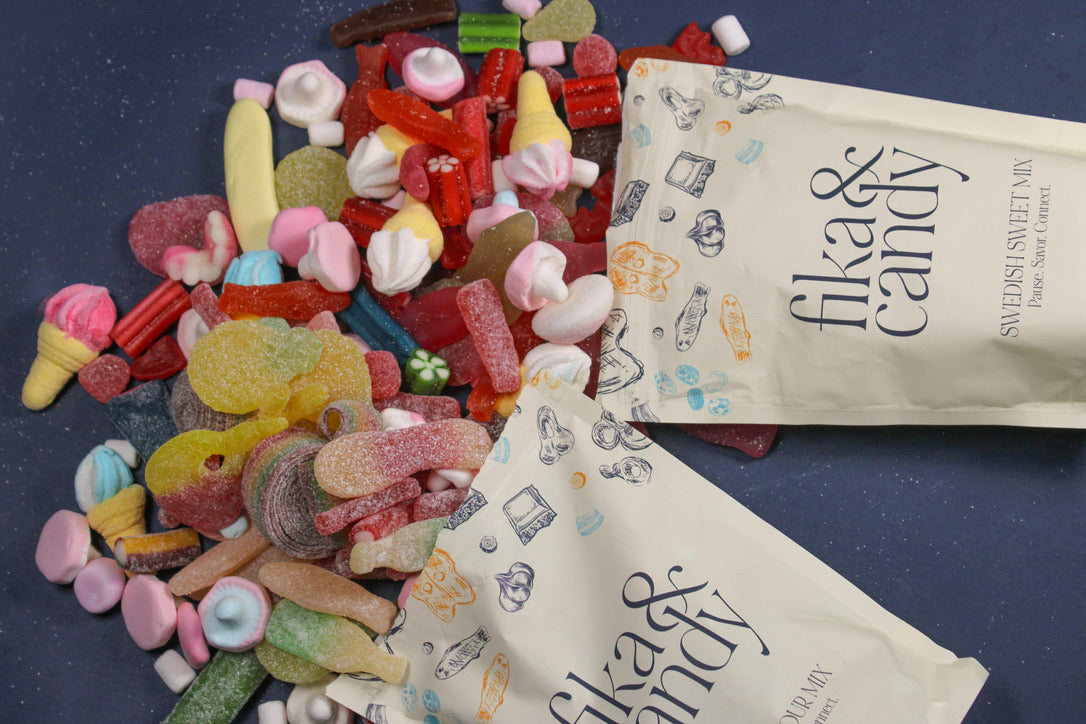
Introduction to Swedish Candy: A Sweet Journey from Tradition to Global Trend
Introduction to Swedish Candy: A Sweet Journey from Tradition to Global Trend
If you think candy is just candy, think again. Sweden has elevated the art of confectionery to a cultural institution, and the world is starting to take notice.
A History Rich in Sugar and Tradition
Swedes have enjoyed sweet treats for centuries, but candy culture took off in the 20th century. After sugar became more widely available in the late 1800s, sweets began appearing at weddings, fairs, and religious holidays. By the year 1900, Sweden had more than 100 candy manufacturers (on a population of five million people). The big push came when cinema became popular around the time of the First World War, as the candy manufacturers in a smart way connected a visit to the cinema with buying candy.
However, it wasn’t until the post-war period that candy became a weekly ritual rather than an occasional luxury. In the 1950s, the Swedish government encouraged “Lördagsgodis” (´Saturday Candy´) as a way to limit sugar intake to just one day a week. Children would eagerly save their kronor to buy a paper bag of sweets at their local kiosk or grocery store. Over time, this small tradition grew into a national phenomenon.
The Birth of Pick and Mix ("Lösgodis")
One of Sweden’s most iconic contributions to global candy culture is the concept of "lösgodis" (’pick and mix candy´). Instead of buying pre-packaged sweets, customers were invited to roam colorful aisles of bins, choosing exactly which candies and how many they wanted.
This wasn't just about variety; it was about freedom. Sweet, sour, salty (hello, licorice lovers!), chewy, crunchy; a custom selection made every bag of candy unique. Hygienic standards also played a role: the Swedish system emphasized clean scoops and strict regulations for freshness, making the experience both safe and delicious.
Today, many Swedish grocery stores, from ICA to Hemköp, dedicate entire walls to lösgodis displays. It's not just for kids; adults are often seen filling their own bags, indulging in a nostalgic and joyful experience.
Why Swedish Candy Wins International Hearts
Swedish candy isn’t just about tradition. It’s about quality. Several factors make it stand out:
- Balance of Flavors: Swedish sweets often master the balance between sweet and sour, or salty and bitter. It’s not just a sugar bomb. It’s an experience!
- Texture and Variety: From the chewiness of a "Djungelvrål" (salty licorice) to the crisp bite of a "Polly" chocolate, Swedish candy offers textures that keep eaters engaged.
- Premium Ingredients: Swedish candy tends to use high-quality gelatin, chocolate, and flavorings. Many Swedish candy brands, like Malaco, Cloetta, and Marabou, have earned global reputations for excellence.
- Nostalgia and Lifestyle: As Swedish lifestyle trends like "lagom" and "fika" become more popular internationally, candy has naturally ridden that wave, embodying small, meaningful indulgences rather than over-the-top excess.
Today, Swedish pick and mix walls are popping up in New York, London, Tokyo and even as standalone stores abroad. Swedish candy has become part of a broader fascination with Scandinavian simplicity, authenticity, and, yes, deliciousness.
Final Thoughts
Swedish candy isn’t just a sweet treat, it’s a cultural export that tells a story of balance, quality, and joyful tradition. Whether you’re savoring a piece of silky Marabou chocolate or daring a friend to try a piece of salty licorice, every bite is a little taste of Sweden’s history and heart.